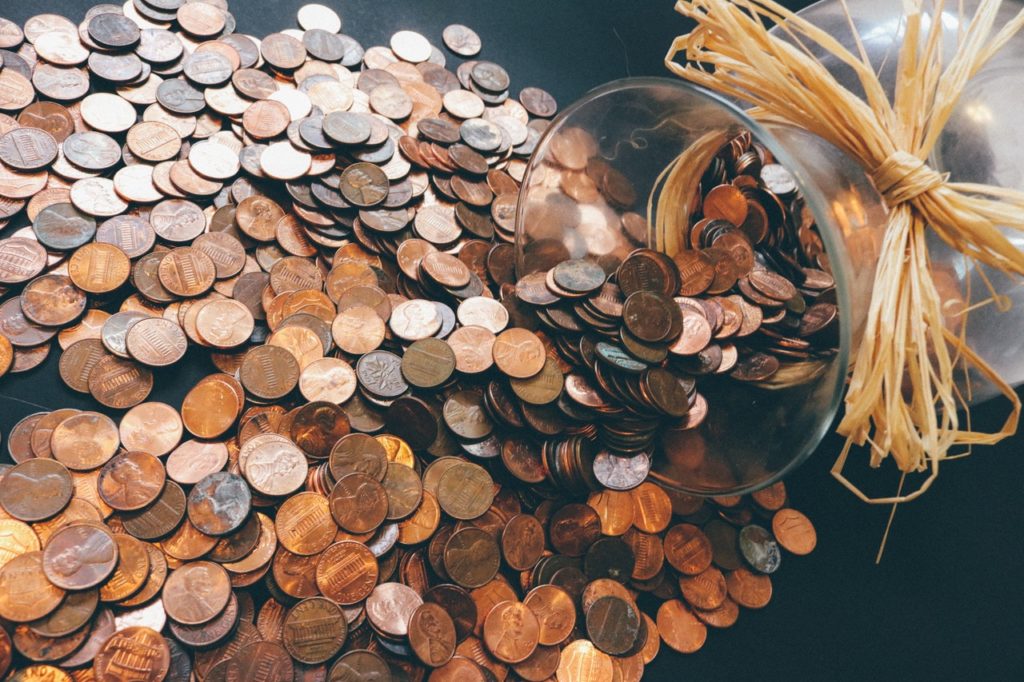
The first ever money was the Mesopotamian shekel, used about 5,000 years ago.
Before we had money, people used the bartering system. Bartering probably started when hunter-gatherers began to form larger groups. When hunter-gatherers were in small groups, they could service all of their own needs. They only needed food, clothing, and shelter. Once the groups got bigger, their needs increased and inter-group trade started. Once agriculture started and people began to settle down, they could produce enough food and had more time to develop other skills. People started to make pottery, carpentry, and other things. Once people started to make goods that went beyond satisfying the simple needs of survival, they had more reason to trade, and the barter system began.
Bartering would have quickly evolved into a monetary system because no barter system can work completely. If somebody wants a cow, the person with the cow might ask for 100kg of wheat, for example. That’s a fair trade, but what if it is winter? The corn won’t be ready until the following year. Does the trade go through? Or do both parties wait? But, if they wait, the owner of the cow might barter it to someone else before the wheat is ready. If the barter goes through, the person getting the cow has to give something to show that they will hand over the wheat when it is ready. They can do this using money of account. This is not money as coins, but a system of knowing how much something is worth and recording that someone is obliged to pay it at some point. This is also where debt and credit started. This kind of money would have appeared thousands of years before a money of exchange system appeared.
Following this, we get commodity money. This is where the item used as money has worth. Salt, tea, seeds, gold, and silver, amongst others, have been used as commodity money. The value of the item has to be perceived by its users.
The next step towards a monetary system was representative money. This is a system used in ancient Egypt, Babylon, India, and China. Commodity money is all well and good until you have to carry the commodities around with you. Warehouses attached to temples and palaces started storing goods for farmers or workers. They would then use clay tokens to represent the goods held. The tokens could always be redeemed at the warehouse for the goods, so the tokens themselves could be traded in the markets as if they were the commodity itself, without having to carry large quantities of goods around. The temples that controlled the warehouses usually set the rate of exchange, deciding how much the goods that they held were worth.
The shekel is a good example of representative money. It began in Mesopotamia in about 3000 BC. The shekel was a unit of weight, and one shekel was equal to a specific weight of barley. It became a common currency and the world’s first.
When trade was carried out between different groups of people, it wasn’t possible to use the same standard, because goods held in the warehouse in A country had no value in B country. To get around this, people started using metals that had worth in and of themselves. Gold and silver were commonly used because they were prized in any country. This would mean that some countries used both money of account and money of exchange at the same time.
Representative money was produced in different shapes but, from about 1000 BC, it slowly started to take the shape of coins. They were invented in China, India, and the cities around the Agean Sea at the same time. However, the coins that we have today are modeled on coins that were invented in the kingdom of Lydia in Asia Minor in about 640 BC. These coins were round, and they had a different image stamped on either side. They could be made in different values. The idea of using coins quickly took off and spread. By 330 BC, coins with Alexander the Great’s head on were printed in huge quantities.
Over time, the commodity that the coin represented was forgotten and the coin itself began to have value, but only the value that we all agree to give it. If we all suddenly stopped agreeing that a $1 bill was worth $1, the economies of the world would come crashing down.
So, the first currency was the shekel developed in Mesopotamia in about 3,000 BC. It was representative money because it represented a specific weight of barley that would be held in a temple warehouse. Whoever had the shekel, could go and exchange it for the barley. After a while, people stopped exchanging them and the markers themselves began to have value. And this is what I learned today.
Sources
https://www.investopedia.com/articles/07/roots_of_money.asp
https://www.discovermagazine.com/planet-earth/when-did-people-start-using-money
https://en.wikipedia.org/wiki/History_of_money
https://en.wikipedia.org/wiki/Shekel
https://medium.com/@kasra.kaveh/the-history-of-money-and-banking-f51fbaa74a26
